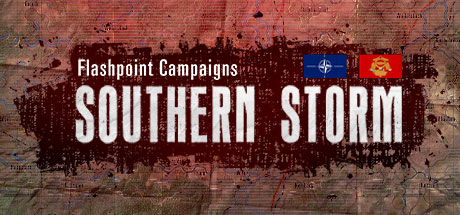AI – Building a Better Brain
Today’s deep dive will look into Southern Storm’s AI (Artificial Intelligence) and what our game does in terms of having some form of “intelligent” gameplay.

AI, Doctrine, and Battle Plans
In this development log, we want to highlight several AI (artificial intelligence) changes that make Flashpoint Campaigns: Southern Storm a better Cold War game that is more fun to play.
In Flashpoint Campaigns, the AI serves two critical roles:
- Low-level unit behavior, where the AI executes orders from you and your opponent to the best of its ability. The better it does this, the more you, as commander, can focus on fighting the battle.
- High-level Course-of-Action selection, where the AI comes up with an overall plan for the battle, sets objectives for larger groups, monitors progress, and makes adjustments where necessary. The better it does this, the more interesting it is to play scenarios against the computer player, and the easier it is to create your own exciting scenarios.
We are first going to look at the high-level behavior and how the new Battle Plans help the AI to fight with more variety and with more appropriate tactics for the era and forces involved.
Next, we will look at the low-level unit behaviors, how they facilitate fighting with Soviet Forward Security Elements, and how they help perform river crossing and minefield breaches.
High-Level AI and Battle Plans
Our starting point has been Red Storm’s high-level AI, which is a competent computer player. One nice feature of the Computer Player is how it relies on “intel” as much, if not more, than the human player. It develops plans based on what it observes (and does not observe). You can blind it by destroying its reconnaissance units. And you can bait it to reinforce the wrong flank by showing forces on the flank while hiding your forces on the other flank. Reconnaissance and the fight for intel are essential parts of Flashpoint Campaigns.

Screenshot 1: Showing the ‘ground truth’ of Bundeswehr and Soviet units on the big map, and the Bundeswehr computer player’s situation map (inset map), clearly showing an incomplete picture of the Soviet advance due to limited intel.
The Computer Player’s reliance on intel did have a downside in Red Storm. The Computer Player lacks useful intel at the start of the battle, when no hostile forces have been spotted, whereas the human player has the mission briefing on working from. Scenario designers did try to assist the Computer Player by placing objectives in various spots and of varying value on the map. Although that often worked well, as demonstrated by classic Red Storm battles such as ‘A Time to Dance,’ the Computer Player had become more predictable, and scenario designers sometimes struggled to make the Computer Player fight according to a specific doctrine.
Battle Plans to Define Opening Moves
For Southern Storm, we set out to improve this and introduced Battle Plans. Basically, a Battle Plan is a set of scenario designer-defined course of actions (COAs) consisting of initial locations and a set of initial high-level orders for groups of units. Southern Storm’s single-player scenarios come with multiple Battle Plans and the option to play against a random selection from those Battle Plans.
A Battle Plan, defining initial locations and orders for units, offers the scenario designer more control. The scenario designer, for example, can direct groups along a flank or specific roads, plan opening barrages, space out attacks to match a country’s doctrine, and have groups hold on to a location for a specific duration and fall back afterward.

Screenshot 2: Showing a Soviet battle plan for one of the tutorial scenarios, with an AT group being directed to occupy the forest area south of Schwenningen. Once in position, the Computer Player will use the AT group as the situation demands.
Battle Plans are not scripted. Instead, Battle Plans integrate fully with the Computer Player acting and reacting on intel. The Computer Player is aware of the Battle Plan, will issue orders to any group without Battle Plan orders, and also will resume command of any group that has completed (or even failed) the Battle Plan orders. In other words, Battle Plans enable the scenario designer to define the opening moves for the Computer Player, adding variation and doctrine, and leave the remainder of the battle to the Computer Player to fight, based on a more solid intelligence picture at that time.
Unit Level AI Improvements
The Unit level AI interprets the player’s orders when issued and later executes these during the turn resolution. First of all, Red Storm’s unit-level AI has been updated to match Southern Storm’s enhancements, for example, the Standard Operating Procedure settings, helicopter ‘Hunt’ behavior, and combat engineer actions.
The Unit level AI has been improved to make it easier for the Commander (you as the player or the Computer Player) to command and apply Cold War tactics, for example, with Soviet Forward Detachments and obstacle breaching.
Forward Security Elements Made Easy
Soviet Forward Security Elements (FSE) served as the advance guard. The FSEs were combined arms teams, moving at speed ahead of the main force, with the aim to deal autonomously with minor opposition and seize and hold critical points. The FSE included mobile artillery, which could deploy from the move when called upon to suppress threats identified by the FSE. The FSE’s mobile artillery would respond quickly, being within range and the same command net. And it would continue to move with the FSE after completing its fire missions.
In Southern Storm, you can organize your FSE and see it act accordingly. First, task organize a combined arms team. Next, instruct this FSE’s mobile artillery units to fire solely in support of their own group (the FSE). Finally, select the whole group, and issue a Hasty Movement group order.
During turn resolution, the FSE will automatically shake out in a column formation, with reconnaissance and armor units forward and artillery near the rear. This column will move forward with all its units and engage threats where necessary. If significant threats are identified, units from the FSE will request fire support. After a brief communications delay, the FSE’s mobile artillery units will automatically halt, deploy to fire, execute the barrage(s), and continue moving along the FSE’s path.

Screenshot 3: Seeing the mortar unit being instructed to fire solely in support of its own group (inset) and the FSE moving along the blue path, with the mortar unit (yellow highlight) near the rear in Bad Windsheim.

Screenshot 4: With the mortar unit having interrupted its movement to fire a quick barrage in support of the FSE, suppressing a cavalry unit on the flank.
In the screenshots above, the FSE has the mortar unit halt and fire a mission without waiting for the next orders cycle and the commander to intervene.
Before Southern Storm, units could not accept barrage requests while having movement orders and could not be ordered to solely take fire mission requests from their group.
Commanding Obstacle Crossings and Breaches
For Southern Storm, we have also upgraded the ‘situation map’ used by the AI, with the situation map now including future orders and their effects. Since this may sound a bit abstract, let’s consider a concrete example.
On the map, we have an M1 Abrams tank company (with units HQ, 1, 2, and 3) all west of the Brigach minor river. As the commander, I can try ordering this tank company to move to the B33 Bundesstrasse (major road) east of the river. It will initially reject these orders since no intact bridge is available across the Brigach.

Screenshot 5: With B tank company (light green silhouettes) unable to move to the Brigach east bank lacking a bridge across the Brigach river.
In Southern Storm, combat engineers (including bridging vehicles) are represented as units on the map. So select and order the bridge-layer to move adjacent to the Brigach river. And choose ‘Build Bridge’ for the ‘on arrival’ orders.
As soon as this order has been issued, the AI’s situation map will be updated with a future bridge at the given location, being available from the time the bridging engineer completes traveling to the river bank and constructing the bridge.

Screenshot 6: Ordering a bridging engineer unit to place a mobile bridge across the Brigach river
With bridge construction across the Brigach now being planned in the near future (with the bridge estimated to become available in 115 minutes), we can again order B tank company to move to the B33 road on the east bank. This time, the tank company accepts the order and plots a move across the planned bridge, with its travel times on the east bank reflecting the late availability of the bridge.

Screenshot 7: With B Tank successfully ordered across the Brigach using the future bridge, which is listed in the Engineering staff report
Similar unit-level AI improvements have been made for crossing/clearing minefields. As a commander, you can order an exploitation force to cross the gap before that gap is established. The knowledge that the exploitation force will wait on the near side of the minefield until the gap is created.

Screenshot 8: With the armored exploitation force waiting for the minefield breach to be created before moving through the gaps
The improved AI ‘situation map’ benefit is not limited to better unit-level behavior. Perhaps more important, it also benefits the commander, be it the human player or the Computer Player, who can now issue all orders for a complex river crossing or minefield breach during a single orders phase without being impacted by long orders cycles.
We’re not saying it is easy to orchestrate a river crossing or a minefield breach; they involve a lot of planning. But Southern Storms's AI improvements make these maneuvers feasible in the game.
So Long and Happy Hunting
This is the final Developer Blog as the Game arrives Thursday, November 17th. We hope these deep dives into our work have helped you understand the work that has gone into the new game engine. We also hope it shows we will keep building on what we have done.
Thanks for reading. We hope to hear back from you in the forums about the blogs and the game!















